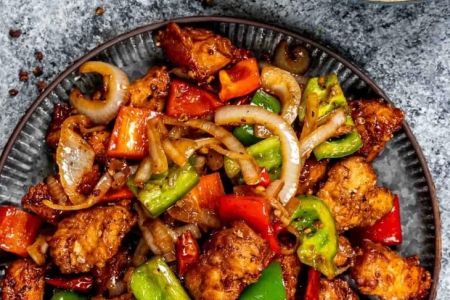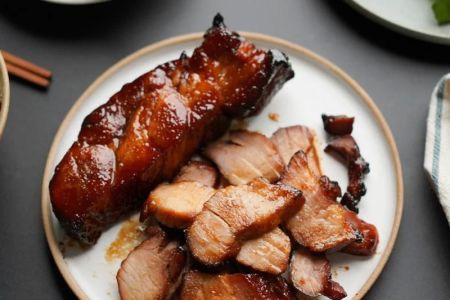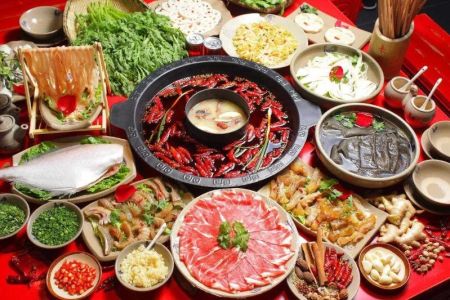The Rise of Chinese Food in America: A Culinary Revolution
As I sit down at a local Chinese restaurant, the smell of sizzling stir-fries and savory dumplings fills the air. It's hard to believe that Chinese food has become such an integral part of American culture, but it has. Over the years, Chinese cuisine has transformed from something exotic and unknown into a familiar, beloved part of daily life for millions of Americans. Whether it's a casual dinner at a Chinese takeout spot or a more upscale experience at a dim sum restaurant, Chinese food has woven itself into the fabric of American culture. But how did this happen, and what impact has it had?
The Early Beginnings: Chinese Immigration and Food's Arrival
The journey of Chinese food in America began in the mid-19th century, during the Gold Rush era. Chinese immigrants arrived on the West Coast, primarily from Guangdong province, bringing with them their culinary traditions. However, the food they initially cooked was quite different from what we recognize as Chinese food today. Early Chinese restaurants catered primarily to fellow immigrants and sold familiar dishes like rice, noodles, and simple stir-fries. It wasn't until the early 20th century that Chinese cuisine started to make its mark on mainstream American culture.
The Transformation of Chinese Food: Adaptation to American Tastes
Chinese food as we know it in America underwent a significant transformation. The original dishes were adapted to suit American palates, which often preferred sweeter, milder flavors. This led to the creation of iconic American-Chinese dishes like General Tso's Chicken and Chop Suey, which bear little resemblance to traditional Chinese recipes but have become staples in American dining. The fusion of flavors, along with the convenience and affordability of Chinese food, helped it gain widespread popularity across the U.S.
Chinese Restaurants: A Gateway to Cultural Exchange
Chinese food also served as a gateway to cultural exchange between East and West. It became a symbol of the broader Chinese-American experience, representing the immigrant struggle, resilience, and eventual integration into American society. Restaurants like New York's Chinatown eateries offered a taste of authentic Chinese culture to curious Americans, and these experiences often led to greater appreciation for Chinese traditions, festivals, and customs. The fusion of American and Chinese cultures through food became a natural outcome of this exchange, creating a richer, more diverse culinary landscape in America.
Chinese Food’s Influence on American Dining Culture
Fast forward to today, and Chinese food's influence on American dining culture is undeniable. The popularity of takeout, food delivery, and casual dining has been heavily shaped by Chinese cuisine. Dishes like lo mein, egg rolls, and kung pao chicken have become American favorites, and many other Asian cuisines have followed in the footsteps of Chinese food, borrowing from its success in mainstream restaurants.
Additionally, the fast-casual dining trend can also be traced back to Chinese food. With its emphasis on quick, affordable meals, Chinese takeout introduced a dining model that would later be adopted by other international cuisines. Restaurants like Panda Express, which serve American-Chinese food, are prime examples of how Chinese cuisine has influenced dining formats, making it even more accessible to a wider audience.
The Growth of Chinese Food in America’s Multicultural Society
One of the most fascinating aspects of Chinese food's success in America is its adaptability and appeal to diverse demographics. As America's population has become increasingly multicultural, Chinese food has embraced this diversity by incorporating regional Chinese dishes and catering to a range of dietary preferences. From vegetarian and vegan options to gluten-free choices, Chinese restaurants are leading the way in offering diverse, inclusive menus. This adaptability has helped Chinese food stay relevant, continuously attracting new generations of customers who are eager to explore its flavors and innovations.
The Cultural and Social Significance of Chinese Food
Chinese food also holds significant cultural and social importance in American society. For many, it's a connection to family and tradition. Chinese restaurants have long been a favorite spot for family gatherings and celebrations, particularly around the Chinese New Year. The ritual of ordering a variety of dishes to share around a table with loved ones has become a tradition for many American families, reinforcing the idea of communal eating and the joy of sharing food with others.
Moreover, Chinese food has become an important part of American pop culture. Whether it's in movies, TV shows, or social media posts, scenes of people enjoying Chinese takeout or dim sum have become iconic. This cultural visibility has helped cement Chinese food as a mainstream culinary choice, shaping the way people perceive both Chinese culture and American food traditions.
Innovations and Future Trends: Chinese Food Continues to Evolve
As the food landscape in America continues to evolve, Chinese cuisine is right there, leading the way in terms of innovation and creativity. From traditional dishes to modern interpretations, Chinese food has adapted to the ever-changing tastes and preferences of the American public. Fusion cuisines, where Chinese ingredients are combined with other cultural influences, have become increasingly popular, reflecting the multicultural nature of the country.
In conclusion, Chinese food has not only influenced American culture through its culinary impact but has also facilitated cultural exchange, social bonding, and the creation of new food trends. Its journey from immigrant staple to mainstream phenomenon is a testament to its versatility, adaptability, and enduring appeal. Whether we're enjoying a bowl of hot and sour soup or savoring a plate of orange chicken, Chinese food continues to shape the way we eat, interact, and experience culture in America.






![Top Chinese Restaurants for Authentic Cantonese Cuisine in [Your City]](https://img.gochinarose.com/d33/2507/4157910400_450x300.webp)
